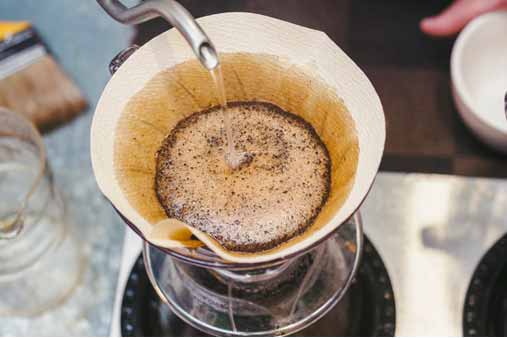How to Choose a Coffee Farm
Specialty coffee’s reputation for high quality stems from the region in which the plants grow, the specific coffee varietal and/or origin, as well as the process growers use to harvest and dry their beans. As a result, choosing a farm or set of coffee producers from which to buy your beans is an important decision for your cafe.
Recommended: Read our full, in-depth How to Start a Coffee Shop Business guides, inspired by coffee professionals, they will help make your coffee dreams real, from sourcing beans to hiring baristas, choosing the best POS system, forming an actual company, and everything in between.

Processing Methods
First, it is important to understand the process the coffee you are buying goes through before it becomes the green beans you will be roasting. The reason behind this is that each process informs the flavor of the coffee. Here is a breakdown of each process:
Natural Method
Only used in regions with low humidity and lots of sun exposure. The whole coffee cherries are harvested and laid to sun dry after being raked into a single layer. Once the cherries have reached an ideal moisture level (around 12%) the entire hull is removed bearing a fruitier coffee due to its prolonged exposure to the cherry.
Washed Method
Opposite to the natural method, washed coffees are processed by removing the fruit surrounding the coffee bean using fermentation. They are then mechanically dried or laid in a single layer to dry until they reach ideal moisture levels (about 11%) producing a coffee that adopts more of the flavors of the growing stages and soil rather than processing.
Pulped/Honey Method
A somewhat happy medium between the aforementioned processes, the honey method is also known as semi-washed. This is due to the partial removal of the coffee cherry before sun drying the bean with mucilage still attached, allowing the bean to adopt some of the fruit flavors of its fruit.
Selecting Your Source
Follow these steps to help you select the right farm-direct source for your business:
1. Choose Your Origin
Start by determining the origin or country from which you want to source your coffee. Keep in mind that coffees vary wildly from country to country due to soil fertility, altitude, local varietals, and common processing methods. If you want to buy a fruit-forward coffee, for example, you’re more likely to find it in Ethiopia than Mexico.
Here are two other factors to consider when selecting your preferred origin:
- Your desired order amount and frequency can help you determine the best origin for your business because you can’t source coffee from all countries year-round.
- Local regulations also may impact coffee sourcing from some countries. In Ethiopia, for example, the government does not allow you to source directly from its coffee farms in an effort to generate governmental revenue. You must therefore source Ethiopian coffee from an importer.
2. Choose Your Region
Coffee-producing countries usually contain several distinct growing regions defined by geography and climate. That means the coffee grown in each region can differ dramatically. Understanding each region’s typical flavor profile can help inform your selection. For more information, check out the detailed overviews of specific regions within our origin pages.
3. Research Regional Processing Methods
Part of choosing a region involves understanding which varietals farmers typically grow there and how they process their harvest. Arabica coffee, like any plant, includes varietals adapted to different regions, resulting in nuanced flavor profiles. Arabica varietals include:
Amarello
Blue Mountain
Bourbon
Catimor
Catuai
Caturra
Kent
Maragogype
Mundo Novo
Pache colis
Pache comum
Typica
In terms of processing, farmers across a specific region or country typically use the same coffee-processing methods due to climate and tradition. Because the processing method impacts a coffee’s flavor profile, it’s important to understand the three main processes — natural, washed, and honey — and choose accordingly.
4. Visit and Taste
After selecting your preferred origin and region, you’re ready to taste the coffee you hope to buy. Sampling coffee involves a process called “cupping,” which is the standard for professional coffee tasting. The best way to do this is to visit the farm(s) in question — many of which have access to facilities for “cupping” purposes. If you can’t visit your target farm(s), many importers have “cupping” facilities you can visit instead along with their own detailed tasting notes to give you an idea of a specific coffee’s flavor profile.
5. Find an Importer
Once you find a farm from which you wish to source coffee, you must decide how to ship the coffee to your roastery. Here are the two main options:
- Direct from a farm – While this can be a difficult process for new business owners given all of the required taxes and permits, it’s possible to source coffee directly from a farm in many countries. You’ll need to find an exporter operating in your farm’s region as well as an importer to finish the process and ship the beans to your roastery. Be sure to check with your farm’s local government to learn about specific requirements in that area.
- From an importer – Importers can make the sourcing process easier if they sell the coffee you want. Once you select an importer, you must then decide on the amount of coffee to order and set up a wholesale account.
Pro Tip: If you want to ensure you buy coffee from farmers who work under fair practices, research importers selling Fair Trade CertifiedTM coffees.
Visiting a Coffee Farm
If you plan on visiting a farm that you’re thinking of buying from, here are a few tips for you:
- Understand what you’re looking for. Farming of any kind is complicated work with many steps required to achieve the final product. Make sure you are aware of what you want to see while you are there, do your research about every step of the farming process before your arrival.
- If needed, hire a translator to aid in language barrier that may arise while you are communicating with your farmer to ensure a positive and helpful experience for you both.
- You are going to want to sample the coffees you have travelled to see, be sure to bring equipment for cupping and a simple manual brew method as well as a grinder.
- Be respectful and kind, these are potentially your future business partners. Therefore, respect and communication are key to developing a connection that will favor you both in your new business venture.
Choosing a coffee farm requires research, patience and effort to build a relationship with the people producing the most important item in your cafe, your coffee. For more information on how to source coffee from specific origins, read our guides to some of the most popular producing countries.

